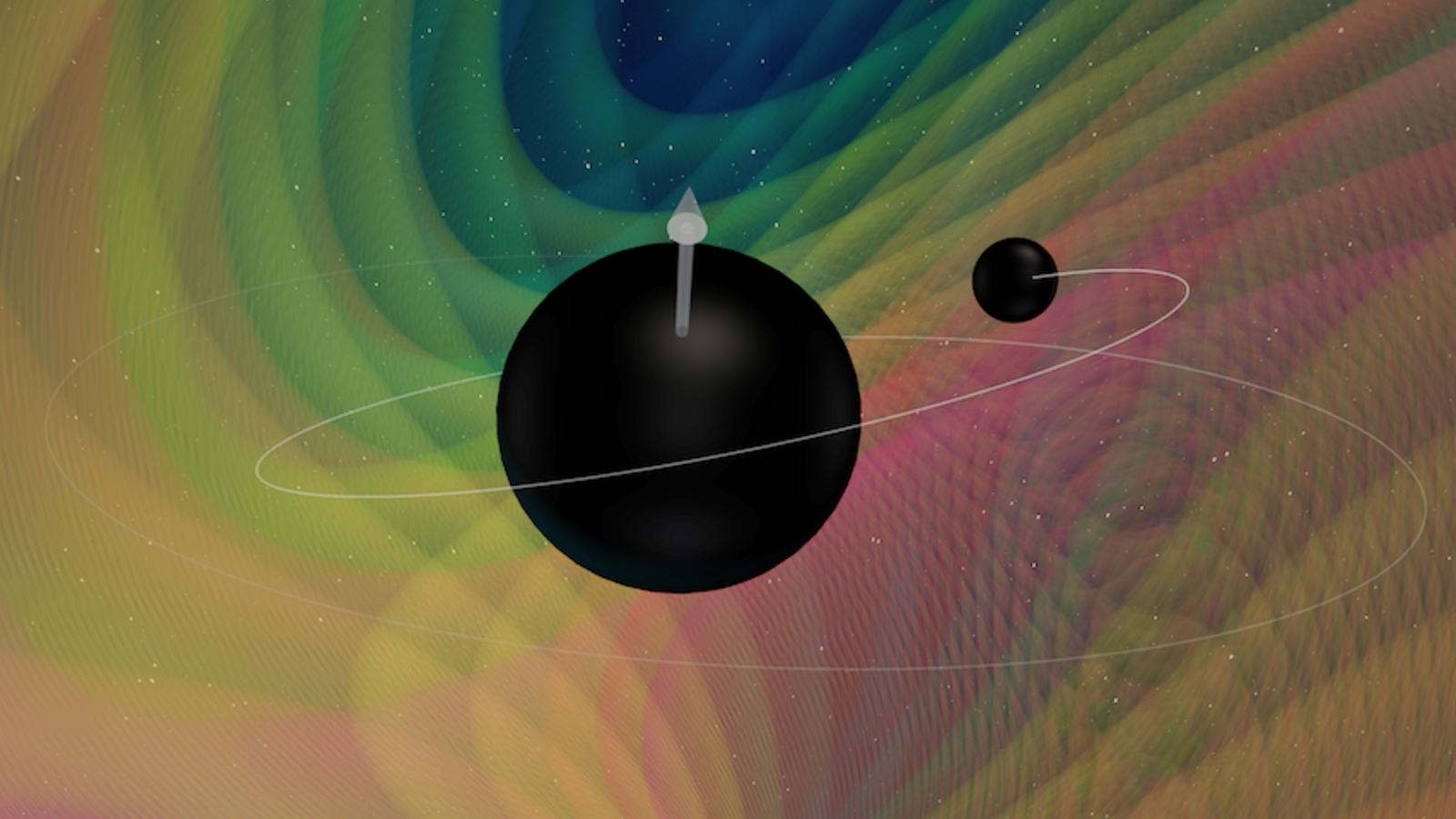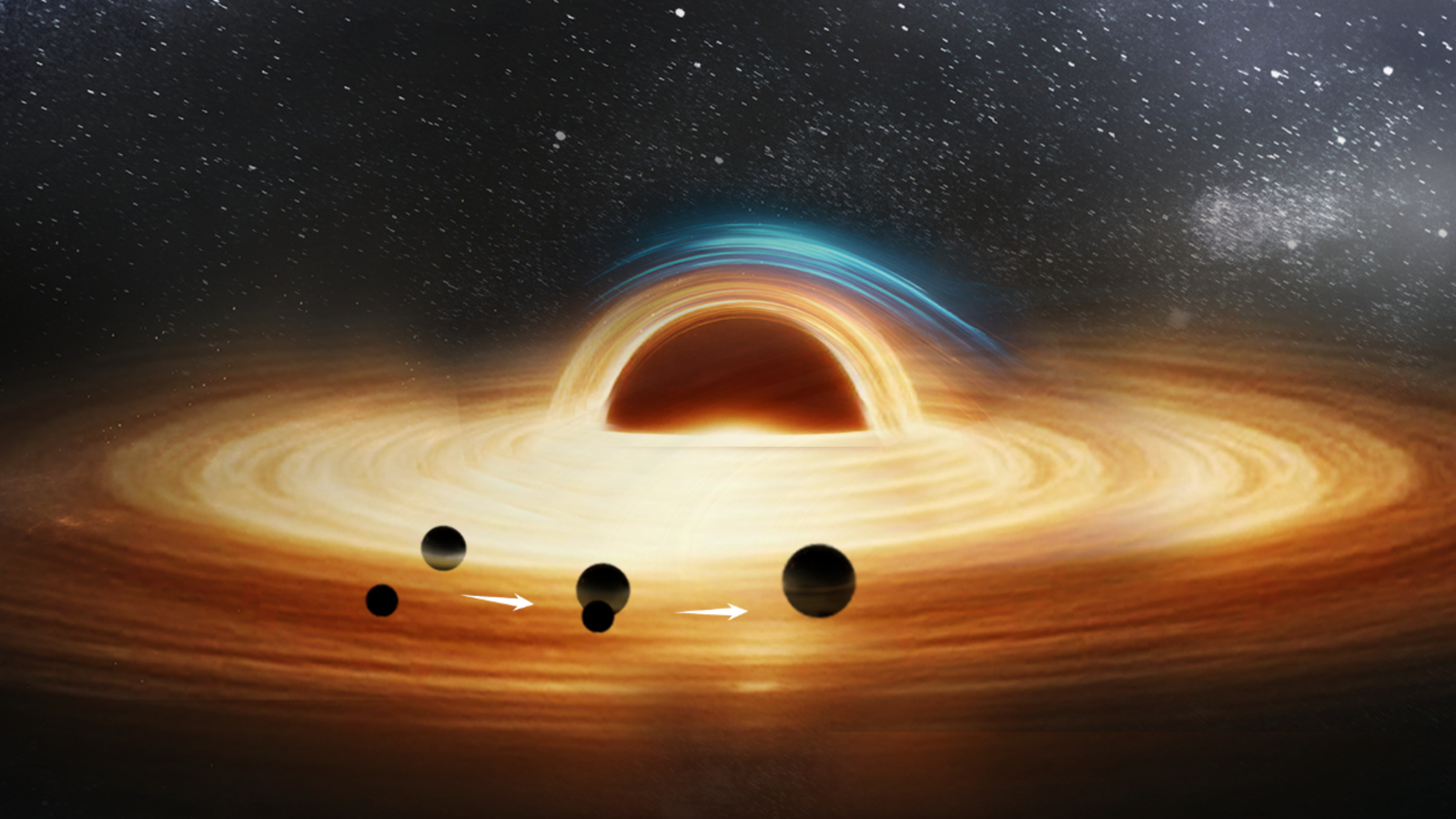Chinese astronomers may have discovered a never-before-seen triple black hole system.
The team identified this triplet, which is locked in a complex “waltz,” after spotting a hidden supermassive black hole lurking in the background of a peculiar gravitational wave event first detected six years ago.
In 2019, the U.S.-based Laser Interferometer Gravitational-Wave Observatory (LIGO) detected a series of faint ripples in the fabric of space-time, known as gravitational waves. They appeared to be given off by the distant merger of two black holes located somewhere between 544 and 912 light-years from Earth. The cosmic collision, dubbed GW190814, was particularly noteworthy due to the size of the merging singularities, which weighed 23 and 2.6 solar masses, respectively.
You may like
Normally, merging black holes have a similar mass to one another because this creates the right type of gravitational friction for them to come together. At the time, GW190814 was the “most unequal mass ratio yet measured with gravitational waves,” according to a 2020 study of the event. Scientists were particularly surprised by the size of the smaller singularity, which is only just massive enough to be considered a black hole.
In a new study, published July 21 in The Astrophysical Journal Letters, astronomers proposed that this uneven merger was caused by a hidden third object that provided the necessary gravitational kick for the two mismatched black holes to collide and transform into a single entity, despite their significant size difference.

It is very rare for unevenly sized black holes to merge together due to the gravitational imbalances between them. (Image credit: N. Fischer, H. Pfeiffer, A. Buonanno (Max Planck Institute for Gravitational Physics), Simulating eXtreme Spacetimes project)
The team used simulations to predict how this interaction would influence the gravitational waves generated by the merger, and identified a unique “fingerprint” signal associated with the hidden object. They then reanalyzed the LIGO data from the initial discovery and found that this fingerprint signal was in fact present.
“This is the first international discovery of clear evidence for a third compact object in a binary black hole merger event,” study co-author Wen-Biao Han, an astronomer at the Chinese Academy of Sciences, said in a statement. “It reveals that the binary black holes in GW190814 may not have formed in isolation but were part of a more complex gravitational system.”
Based on the simulations, the team believes the most likely identity of the hidden compact object is a supermassive black hole. They don’t yet know how large this behemoth may be, but the lower limit for supermassive black holes is around 100,000 solar masses, suggesting that it is at least that massive — and making it far larger than the other two objects initially identified in the system.
The smaller pair of merging black holes were likely part of a binary system that danced around the supermassive black hole as they spun around one another, similar to how Earth and the moon circle each other on their collective journey around the sun. This is the first time that this configuration has been seen in a black hole system.
The newly formed black hole from the merger will likely continue to dance around its supermassive partner for billions of years before eventually being swallowed by the larger object, the team added.
The new findings not only provide “significant insights into the formation pathways of binary black holes” but also provide a new way of identifying other hidden giants lurking in the background of other similarly uneven black hole mergers, Han said.
Since LIGO detected the first-ever gravitational waves in 2015, the observatory has spotted more than 100 additional gravitational wave events, most of which were caused by black hole mergers. Each new detection provides more data scientists can use to uncover new secrets about the universe’s most massive objects, which are notoriously hard to study.
Black hole quiz: How supermassive is your knowledge of the universe?
